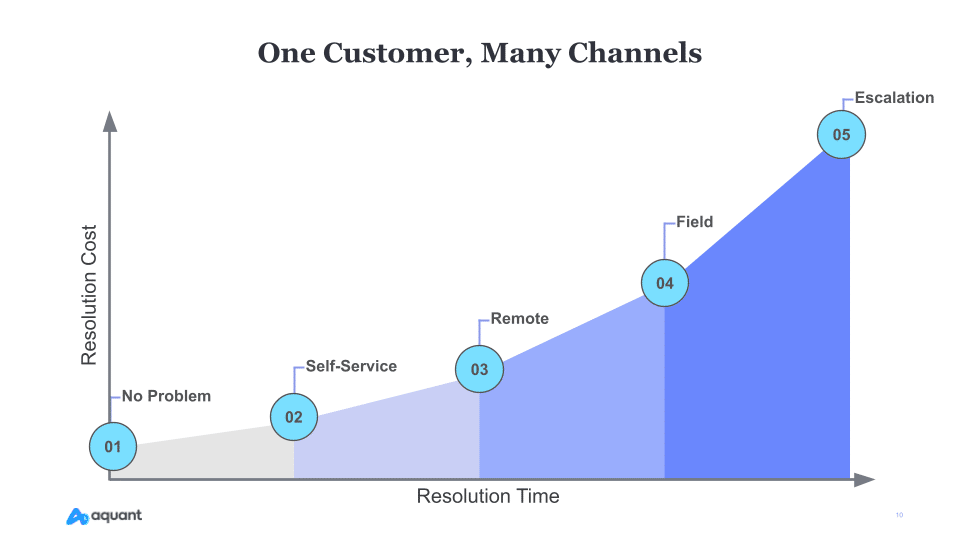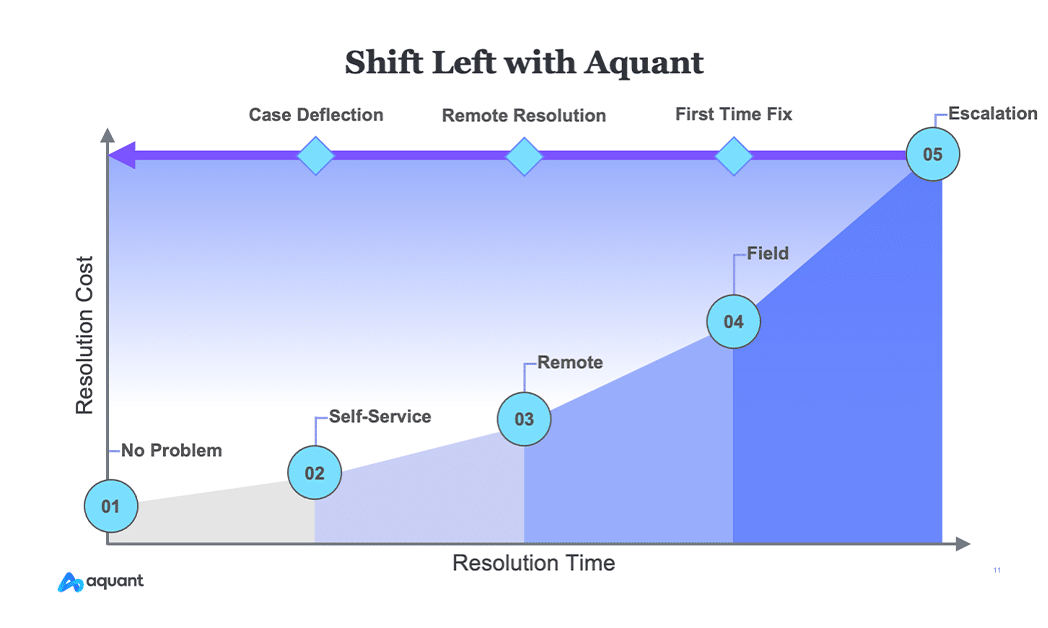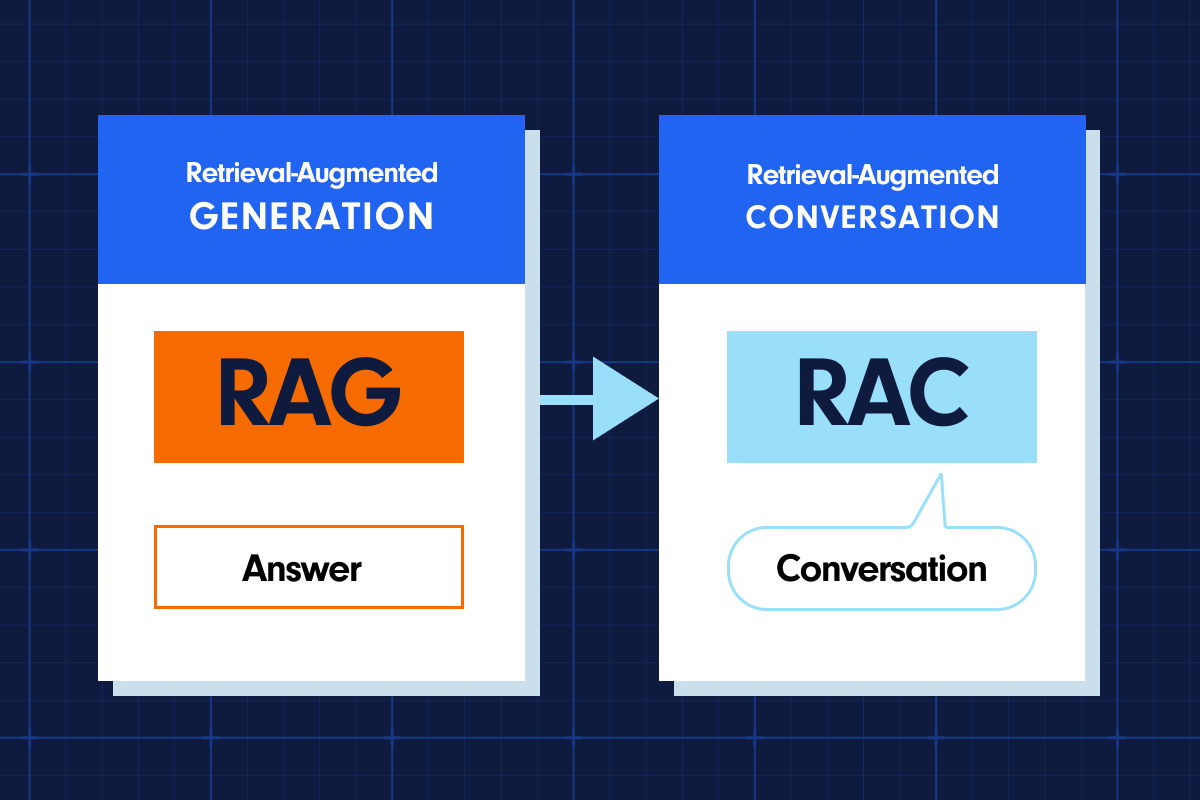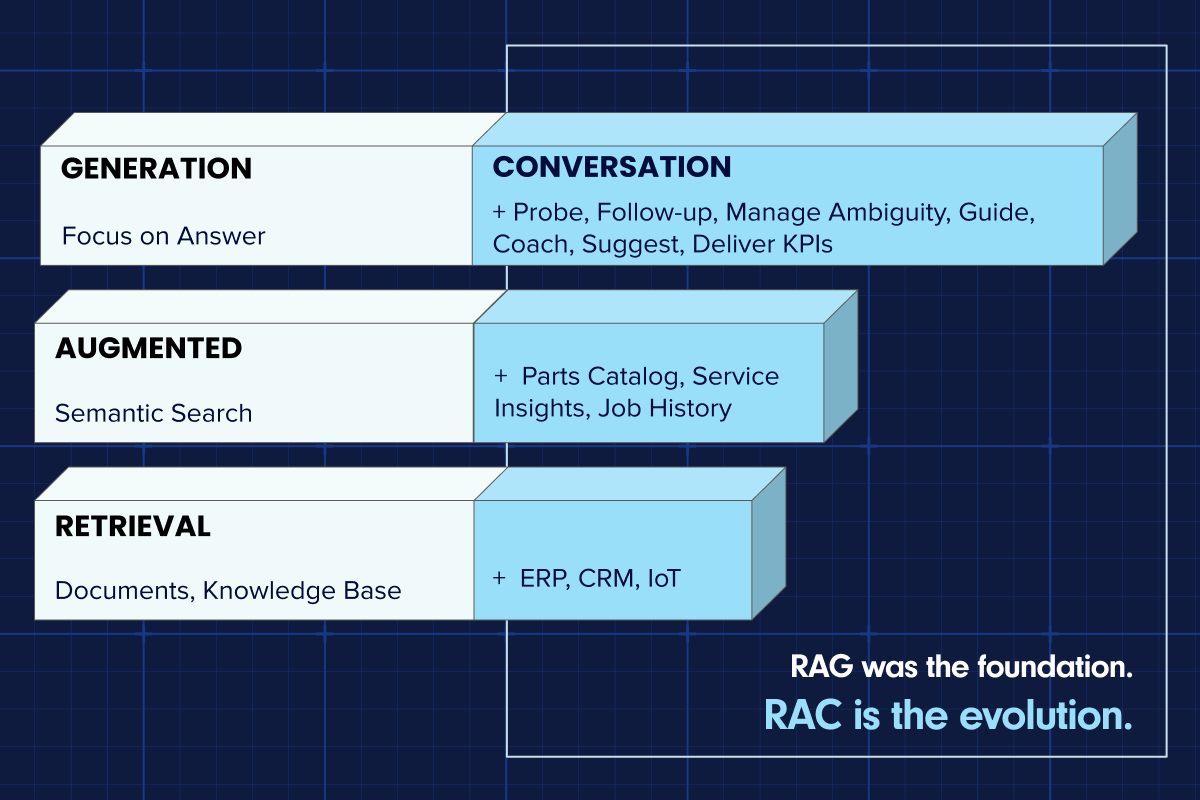Shorten the service lifecycle, improve customer relationships, and reduce service costs.
Over the last decade, the evolution of service has resulted in a widening gap between rising customer expectations and growing workforce challenges. Accordingly, organizations have had to get creative and look at new service delivery methods to meet customer demand. But, introducing multiple channels to serve has created more complex service experiences with a lack of resources to address these challenges.
Traditionally, different channels (i.e. call center, field, self-service) operated under various objectives, resulting in a disjointed customer service experience. One common example in service is how call center agents are measured on average handle time. This metric is not the problem in itself, but what if you found out that spending an extra 10% of the time on the phone could result in a reduction of 10% in truck rolls, subsequently improving profit margins? Wouldn’t most organizations want that? But because service is measured in silos, companies fail to create the best and most efficient customer experience.
Service is becoming more strategic than ever, and companies are now evolving to look at the customer journey holistically across multiple channels. With advancements in data and AI-powered technology, organizations can strategically identify the most cost-effective and efficient way to approach a service issue. It all starts with shifting your customer experience left. But what does that mean?
Next Step
Check out our companion piece, How to Shift Left: Your Six-Step Framework, to learn how your organization can start your Shift Left journey.
Shifting Left: What Does it Mean?
Simply put, the Shift Left concept is about resolving as many service issues as quickly and efficiently as possible. That sounds like a no-brainer, right? The idea is to use data to strategically identify the areas in your business where you can make a quantifiable impact that improves your bottom line. Whether that means reducing escalations and improving first-time-fix, identifying truck rolls that could’ve been resolved remotely, or even turning simple calls into a self-service experience, shifting left is about taking every service interaction and pushing it to the left as much as possible.

Today, 1 in 3 service calls results in a truck roll (i.e. the most expensive way of servicing customers – costs can be $2500+). Of those, 1 in 4 results in multiple visits. This is not sustainable, especially given the current economic climate. Instead of resorting to a costly dispatch/truck roll every time, service teams are better off resolving the issue through remote resolution, virtual assistance, self-service, etc.
For example, could you have a virtual agent (like a bot) point the customer to the right knowledge base article or some self-solve instruction to be able to fix it? Or, even better, before the product breaks down, could you proactively alert the customer to interact with the device, machine, or whatever product they’re working with, and provide step-by-step instructions to the customer in the most intuitive manner so that they could avoid downtime altogether?
The objective behind the “shift left approach” is to shift the resolution closer and closer to the end customer so that they don’t even need to reach into the enterprise. By shifting even further to the left, customers can quickly access critical information without escalating an issue. And, as highly skilled technicians make their expertise and insight more available to less experienced colleagues, the less-experienced staff can gain organizational knowledge and begin sharing it with their customers. In doing so, an entire organization raises itself to a higher place intellectually. Every time you shift left, there is a quantifiable business benefit: you save money and increase customer satisfaction.
Check out our companion piece, How to Shift Left: Your Six-Step Framework, to learn how your organization can start your Shift Left journey.








